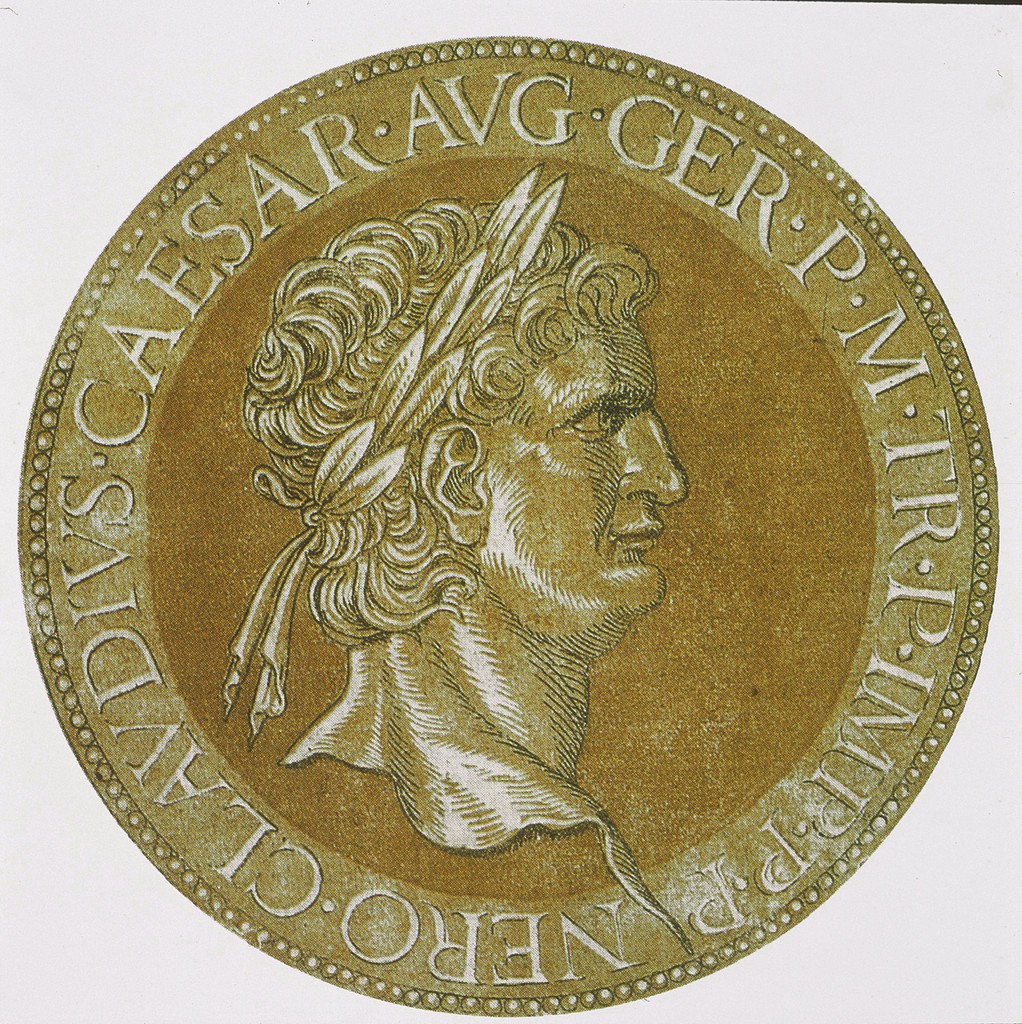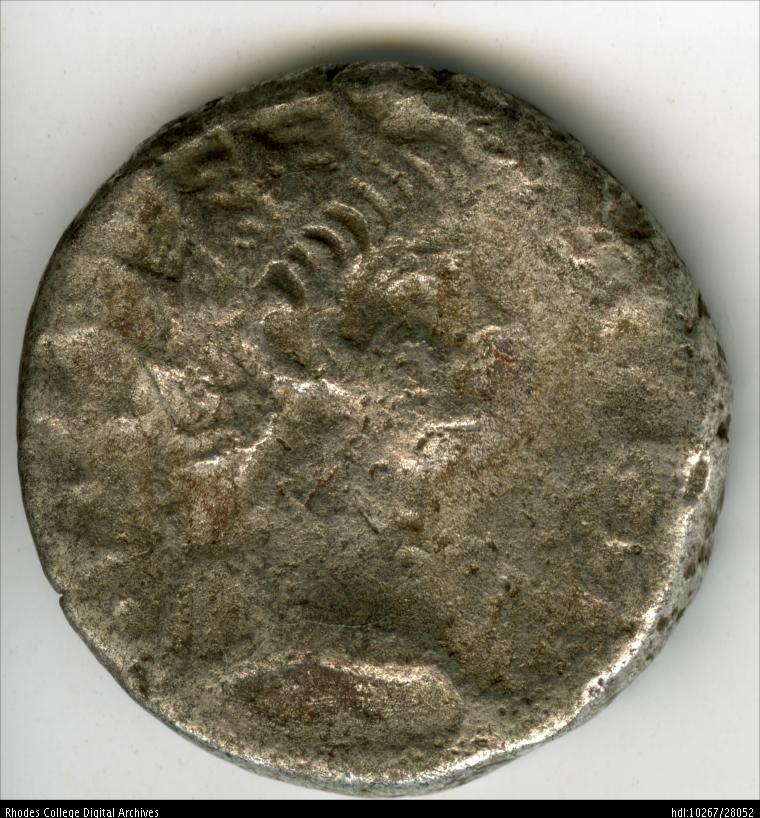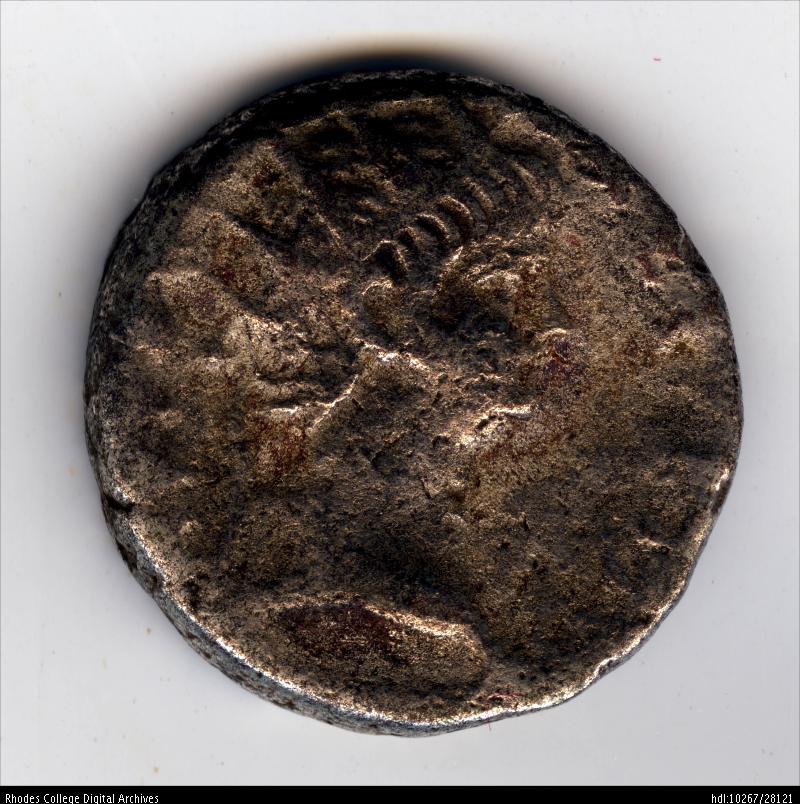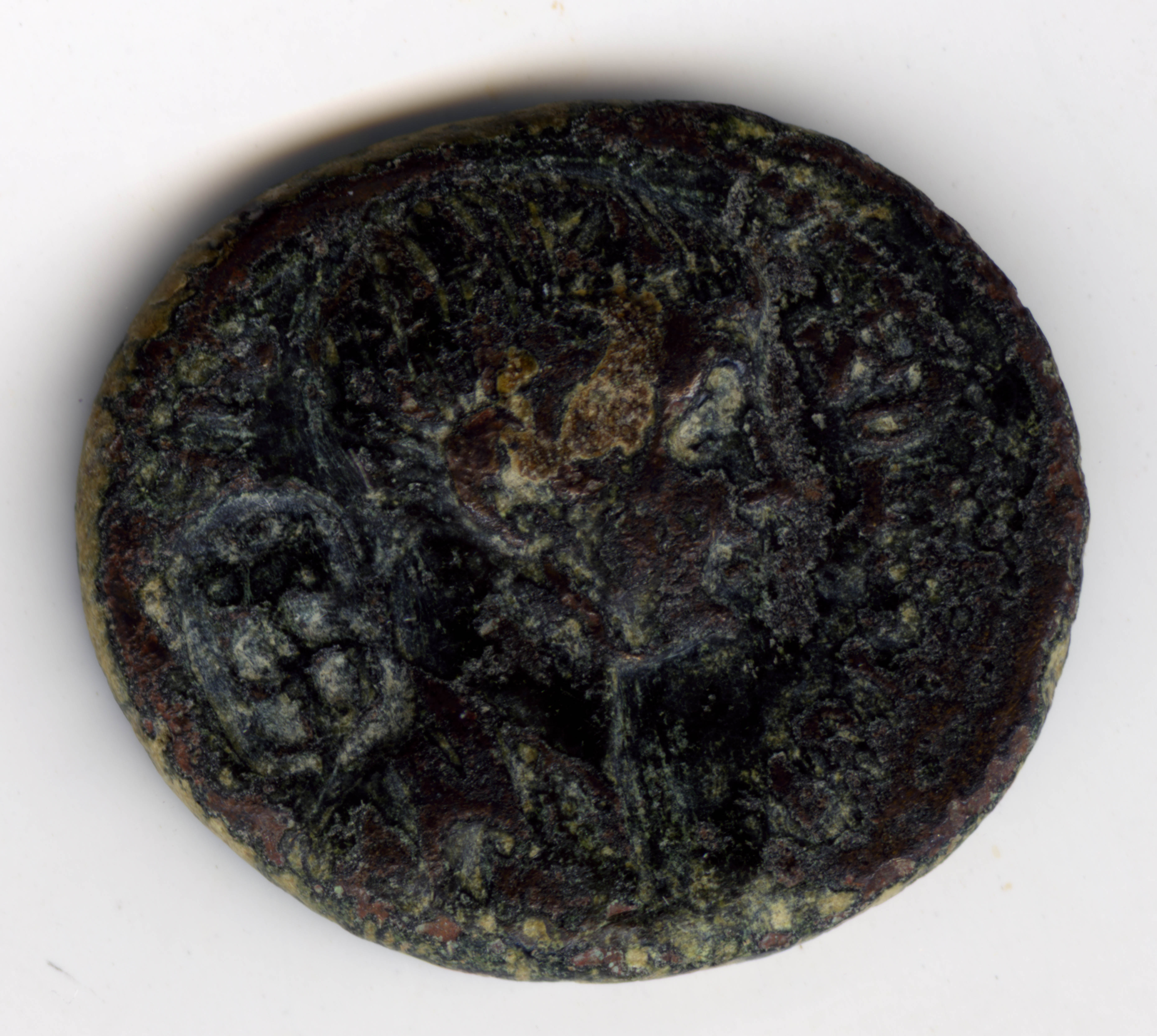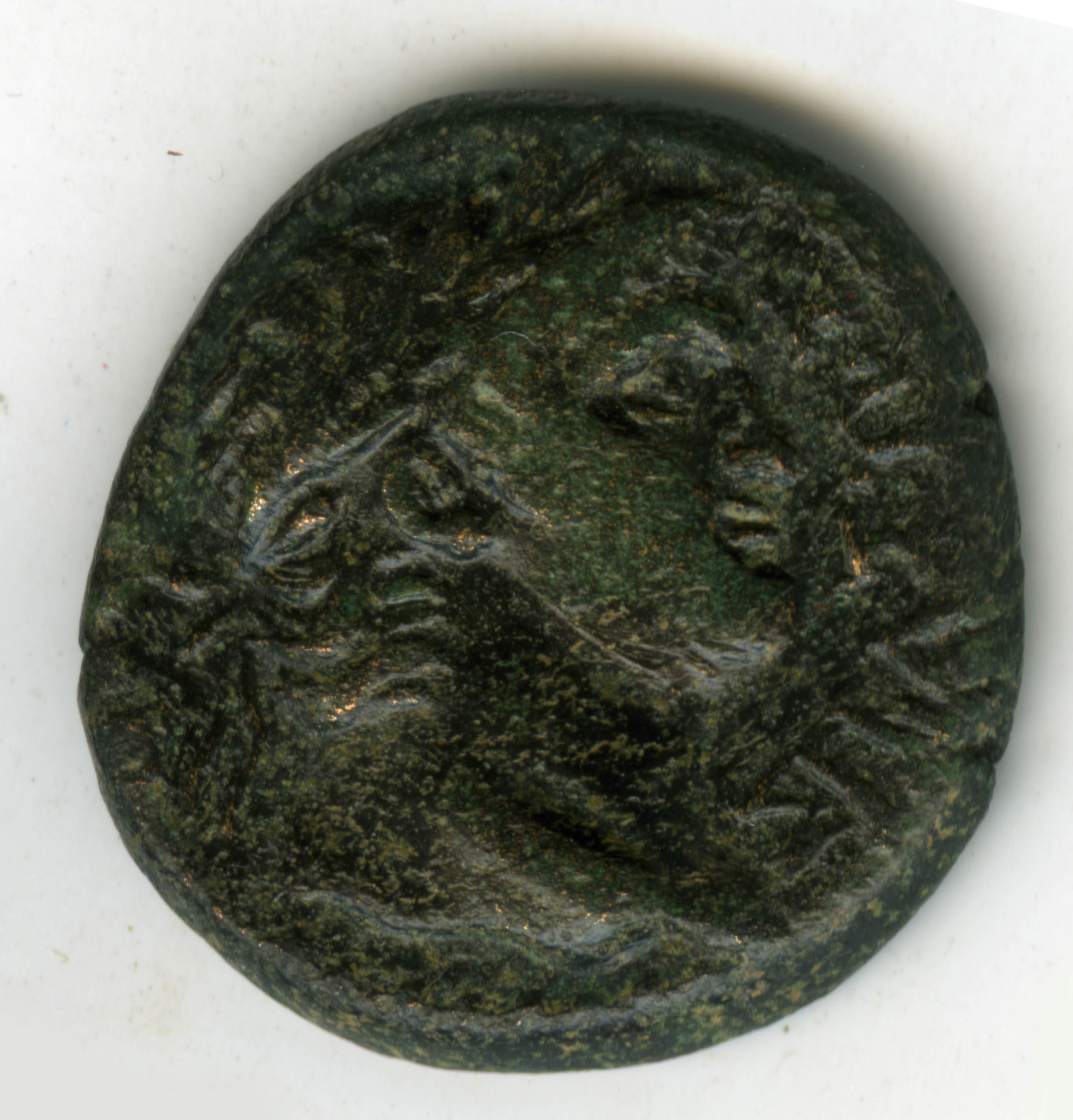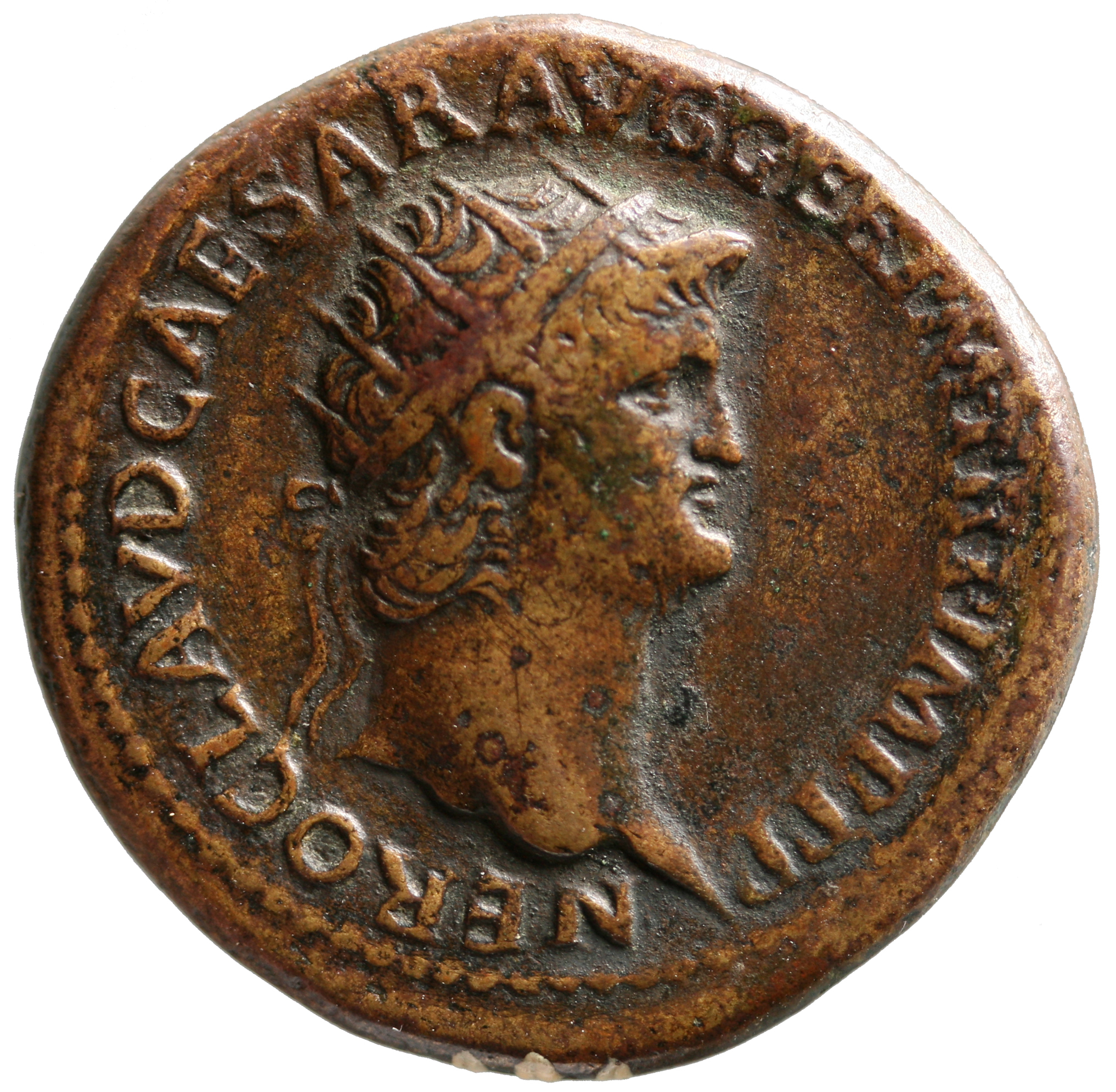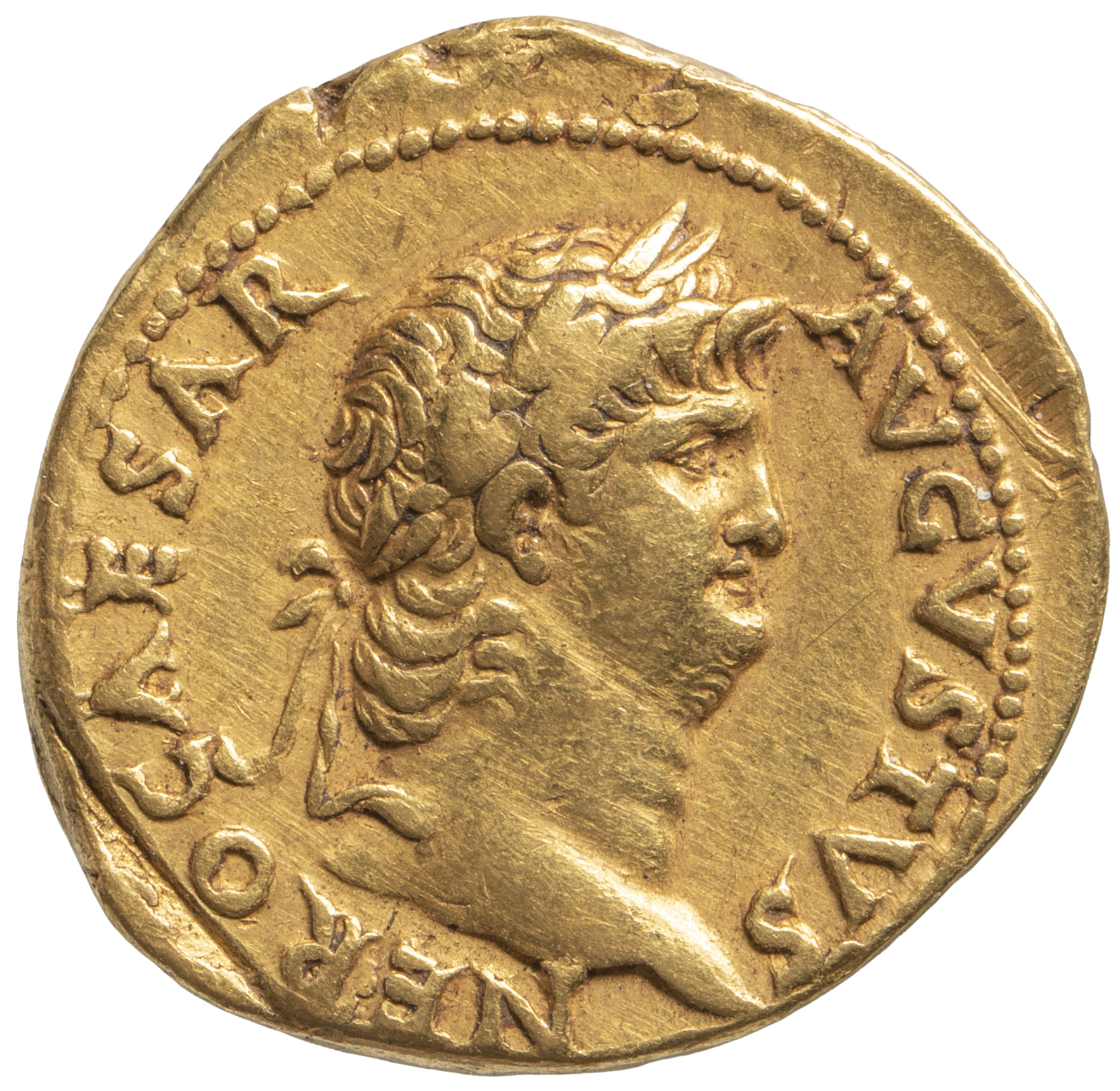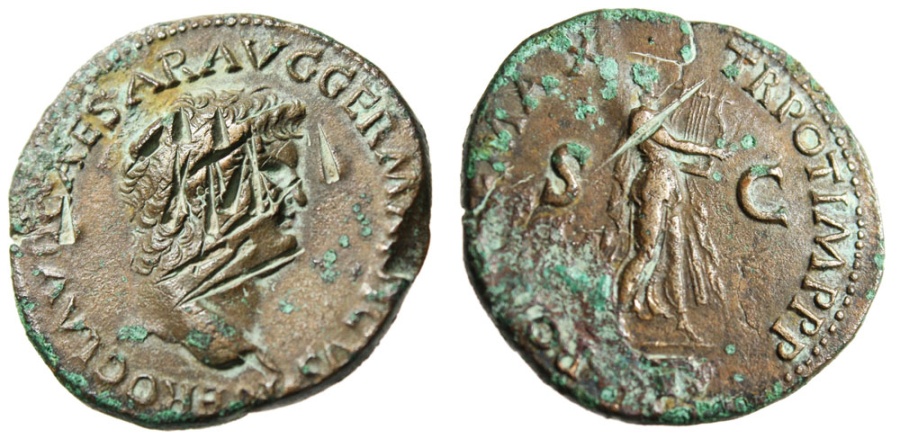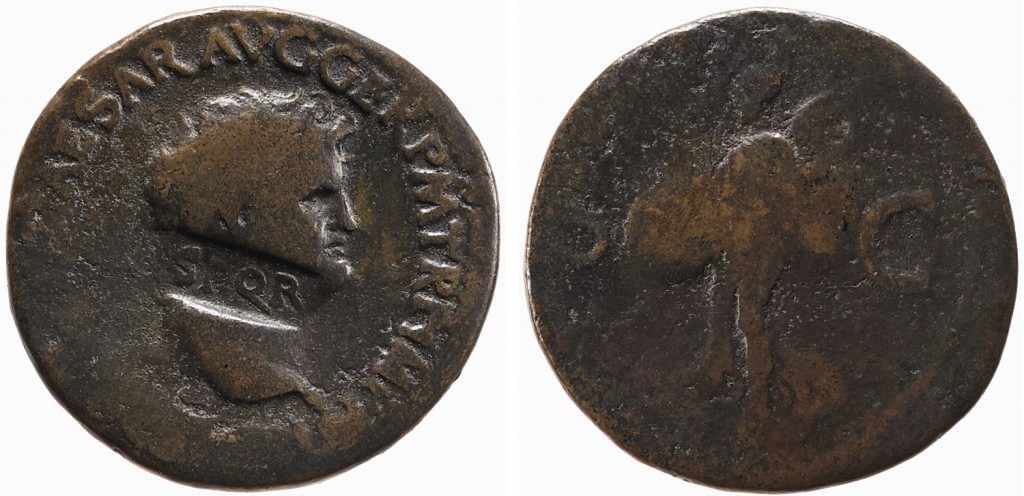Emperor Nero was a divisive figure in Roman history, to say the least. Due to the damnatio memoriae that took place after his reign, there are few true portraits of Emperor Nero left, however, one thing that there are many of, are coins. As Emperor, Nero had the composition of coins changed, so many new ones were minted during his reign, and on many of those coins he chose to be depicted wearing a crown or laurel. While it was not entirely uncommon to be depicted wearing a laurel, the radiant crown that is shown in several types of coin portraits of Nero was fairly new, especially for the Julio-Claudians.
The Julio-Claudians, beginning of course with Augustus himself, the first emperor of Rome, wanted to act as though they were still elected officials in Rome, but Nero was more interested in being a true Emperor, or even a king. Augustus went as far as to ceremonially give the position of consul back to the Senate along with its powers, before taking control of them again and taking the title of “Princeps” “the first citizen” and “Imperator Caesar divi Filius” “Commander Caesar son of the deified one”.
In the Auben Gray Burkhart Collection, coins number 8 and 77 show emperor Nero in a radiant crown, while coin 10 shows him wearing a laurel wreath and coin 76 shows him with a bare head or potentially with another wreath. While coins 10 and 76 do not depict Nero in a crown, the obverses are images of gods, implying that Nero likened himself to a god. Specifically, coin 10 shows Zeus or Jupiter, king of the gods, and coin 76 shows Apollo, whom Nero often likened himself to. These comparisons, likely drawn by the emperor himself, emphasize his draw to power, and his personal view of himself.
During his reign, Nero enacted a lot of economic reform, including changing the metal composition of coins, so a lot of new coins would have been minted over this period of time. The goal of his economic policy was primarily to help the common people, which actually made him very popular with them, but very unpopular with the senatorial class, as these reforms were not designed to help them. So these coins symbolize more than just typical Roman portraiture and propaganda, they represent a whole new wave of economic innovation by Nero.
Auben Gray Burkhart Collection Coin 8 Obverse
This coin is a billon Tetradrachm of Nero from 63-68 CE. The obverse shows a bust of Nero wearing a radiant crown on his head. This was not common at the time, rather a laurel or nothing would be worn on the head. It is very worn and faded, but you can still make out the spikes radiating from the top of his head. the wear on this coin makes it hard to make out the details of the portrait, but you can still see his traditionally curly hair at the top and his normally passive eyes.
Auben Gray Burkhart Collection Coin 77 Obverse
Here we have another coin depicting Nero wearing a Radiant crown. This coin is also very worn so the radiant spikes can barely be made out. It is a Roman tetradrachm made of predominantly copper, dating between 54 and 68 CE. It is very worn, so it is hard to make out any details at all of Nero, but you can still see his rows of curls on the top of his head along with the band of his crown with its radiant spikes. There clearly used to be writing around the edge of the coin, but it has all been worn away and is completely illegible now.
Auben Gray Burkhart Collection Coin 76
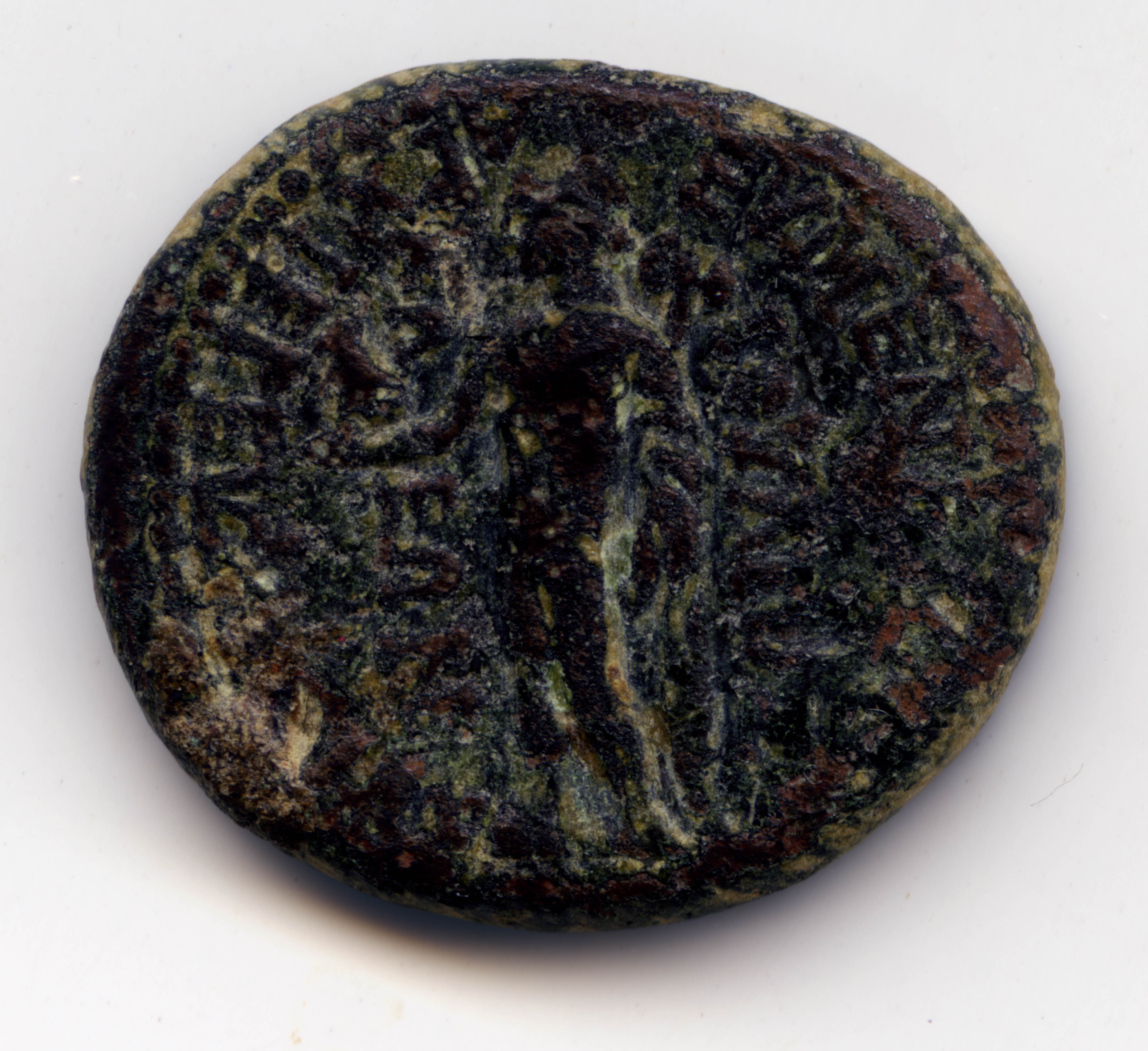
The obverse of the coin (left) shows the bare head of Nero facing right, while the reverse of the coin (right) shows Apollo holding a raven and bipennis. This coin dates from 54 to 68 CE. Nero often likened himself to Apollo, as a musician and actor. It was a long standing tradition for emperors to compare themselves to the gods, but Nero took it to another level with Apollo. Even going so far as to build a giant statue that was meant to be a hybrid Nero and Apollo, the "Colossus of Nero". Nero compared himself to Apollo a lot because he saw himself as an artist as well as a strong leader, like Apollo, and wanted to propagate that message throughout the empire, so printing himself on coins with Apollo was one easy way to do that. Nero wanted to emulate the combined strength and talent that Apollo held and symbolized, so he did all that he could to associate himself with the god. By not including a crown or wreath on this coin, he shows that he is Apollo’s equal, not his superior.
Auben Gray Burkhart Collection Coin 10
This coin is an AE of Nero, Roman Emperor from 54-68 CE, with a Laureate head facing right on the obverse (left) and an image of Zeus laodikeus standing left (right), holding an eagle and eagle tipped scepter on the reverse. By comparing himself to the kind of the gods, Nero is creating an image of himself as a king and sending the message that he is Zeus or Jupiter's equal. While the god whom he wanted to associate himself most with was Apollo, the god whose power he wanted was Jupiter, so it makes sense that he would also put his image on coins with the king of the gods. He wears a more traditional laurel wreath in this image, which was more common of the Julio-Claudians, and perhaps was meant to show that he was still subservient to the gods himself so as not to anger them.
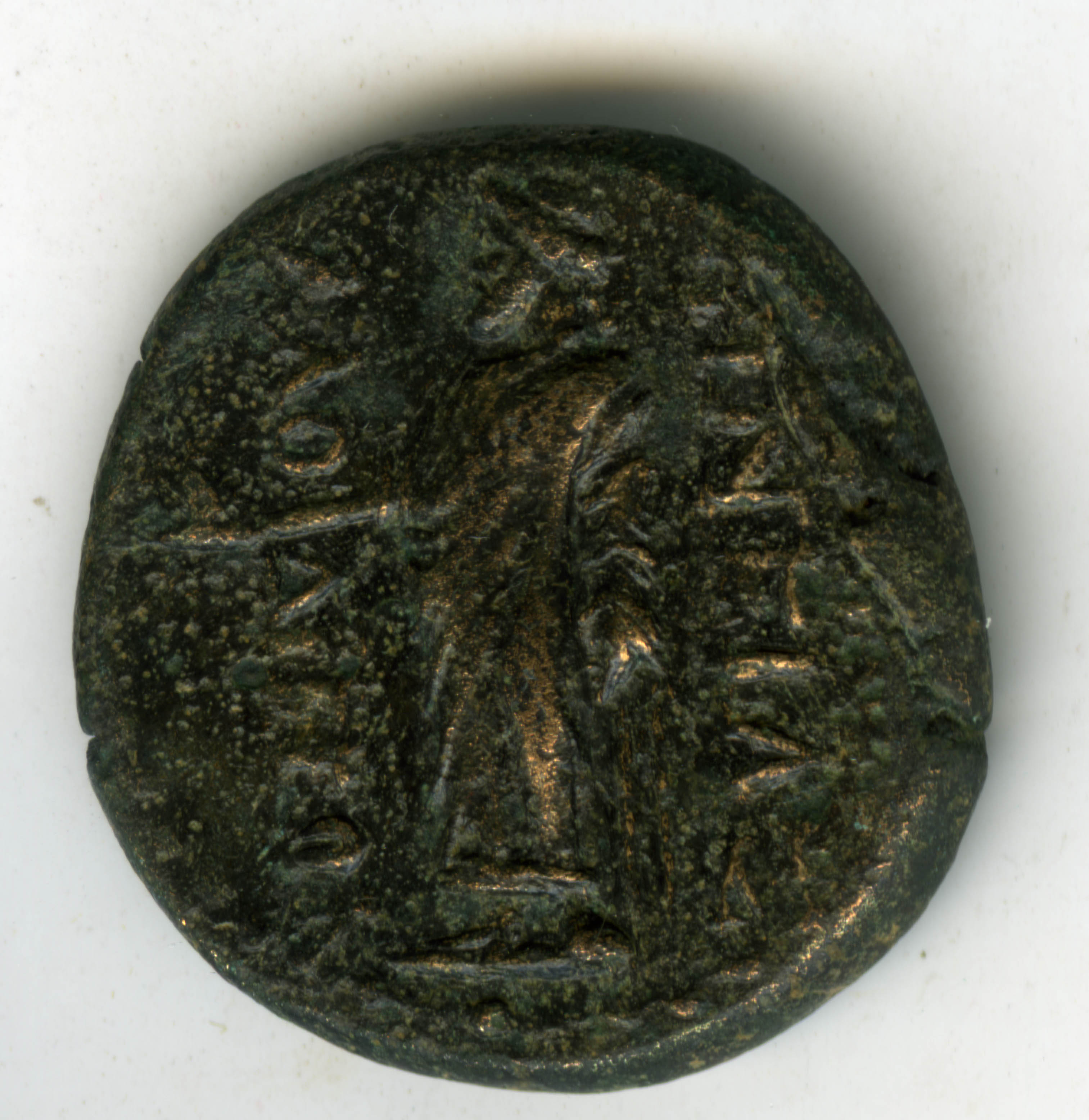
Nero in a Radiant Crown
This coin is a Dupondius, dated 62-68 CE and is made of Brass. The obverse of this coin shows a much clearer image of Nero in a radiant crown, the same style he would be wearing in the two first coins with the text "NERO CLAVD CAESAR AVG GER P M TR P IMP P P" along the perimeter of the coin. You can tell that this is an image of Nero from his very distinct nose and chin, as well as his somewhat messy curly hair and broad forehead that were typical of Julio-Claudian portraiture. This coin has Nero's classic facial expression, fairly calm and passive, with a slightly furrowed stern looking brow. You can see some slight texture below his chin in what looks like his traditional neck-beard, but the wear makes it hard to tell if this is intentional or not.
Gold Coin Nero With Laurel Wreath
This is an Aureus made of gold believed to have been minted between 65 and 66 CE. Its obverse shows a very clear bust of Nero wearing a laurel wreath that is tied in the back of his head. Due to the good condition of this coin you can very clearly make out the texture of his traditional facial hair on the sides of his face, and neck beard below his chin. This along with his characteristic straight nose and short chin, along with the text "AUGUSTUS NERO CAESAR" let us know that this is unmistakably an image of Emperor Nero.
Damnatio Memoriae
Despite his successful economic reforms, and other popular legislature, Nero suffered a Damnatio Memoriae, and was erased from most public records and had his portraits destroyed by the Flavian Emperors who took over after his death in 68 CE. Because this was a dynasty change, the Flavians had to erase all good memories of Nero, including his economic reform, and therefore had a large number of his coins destroyed. Because of his persecution of Christians, he effectively suffered a second Damnatio at the hands of Christian historians who sought to get revenge for his treatment of early Christians as recorded by Tacitus.
After his death, Nero was considered by many Christians to be the Antichrist who Paul refers to in the Book of Revelation. It is true that after his death, because he was actually very popular among the Roman common people, it was believed that he would be resurrected and return to rule Rome again. People brought flowers to his grave for many years after in hopes that this would happen. But having been on the receiving end of his persecution, early Christians obviously did not want this to happen, and Christian thinkers, as well as Roman elites who hated Nero wanted nothing less.
Nero Damnatio Coin
Here we have a Nero AE AS Minted 64 AD. On the obverse is written "NERO CLAVDIVS CAESAR AVG GERMANIC" along with a bust of Nero. On the reverse it says "PONTIF MAX TR POT IMP P P" and shows what is meant to be either Nero or Apollo playing the lyre which would have been very significant to him as Nero was a talented lyre player. The images on this coin were scratched out as part of Nero's Damnatio Memoriae, but can still be made out underneath the damage. This is a very powerful image, as it shows the extent to which these damnatio went, even so far as to vandalize coins from his reign.
SPQR Nero Coin
Here we have another defaced coin with a bust of Nero on the obverse with SPQR printed over his neck and a fairly unintelligible image on the reverse. This is a copper AS minted in 65 CE and found in Lyon, France. It goes on to show the extent of Nero's damnatio, that it was not just individuals marking up old coins, but the Roman Government itself defacing them. The mark of SPQR or Senatus Populusque Romanus, the senate and people of Rome, shows a more official version of this form of damnatio and destruction of Nero's image both public and private.
Conclusion about Ancient Coins
Emperors had a lot of power during their reign, and to as great an extent as possible, that power extended to the public’s opinion of them. They could not directly control what people thought of them, but they had almost complete license to present themselves however they wanted to. Nero was no exception. He wanted to be seen as an all powerful ruler, an artist, an actor, a musician, and most importantly as Apollo. Coins acted as little bits of art and propaganda that Roman citizens carried around with them and were perhaps the most common form of image of the emperor they saw on a daily basis. The way that Nero wanted Romans to see him was how he presented himself on his coins.
In conclusion, we can learn a lot about an emperor and his rule by the coins that we have remaining from the time. We can learn about how they saw themselves, how they wanted others to see them, what kinds figures and items they wanted themselves associated with, and in the case of coins that have been either damaged, or very well preserved, what people actually thought of them. The fact that Nero was meant to be erased from the record, and that some of his coins were defaced towards that end, but also that so many survive still today really tells us that while there were some efforts to get rid of him and to slander his name, some people did not agree with that, and thought of him otherwise.
Page Completed by Sarah Mann, Rhodes College '22
